CARS.COM — Choosing which engines should go with which car can sometimes make one feel like Goldilocks. In the case of the 2017 Audi Q7, it used to be easy with a supercharged V-6 being the only engine option. But Audi has decided to join the downsizing trend and now offers a smaller, turbocharged 2.0-liter four-cylinder in 2.0T models as the new base engine option.
Related: 2017 Audi Q7 Gains Turbo Four-Cylinder
The 2.0T is the workhorse engine for Audi. It's found in models ranging from the TT to the A5 to the Q5, but nothing as big as the Q7 until now. It makes 252 horsepower and 273 pounds-feet of torque, which puts it far behind 3.0T models. Those come with the supercharged 3.0-liter V-6 that produces 333 hp and 325 pounds-feet of torque. Both models come with an eight-speed automatic transmission and Quattro all-wheel drive standard, so there is some congruity there.
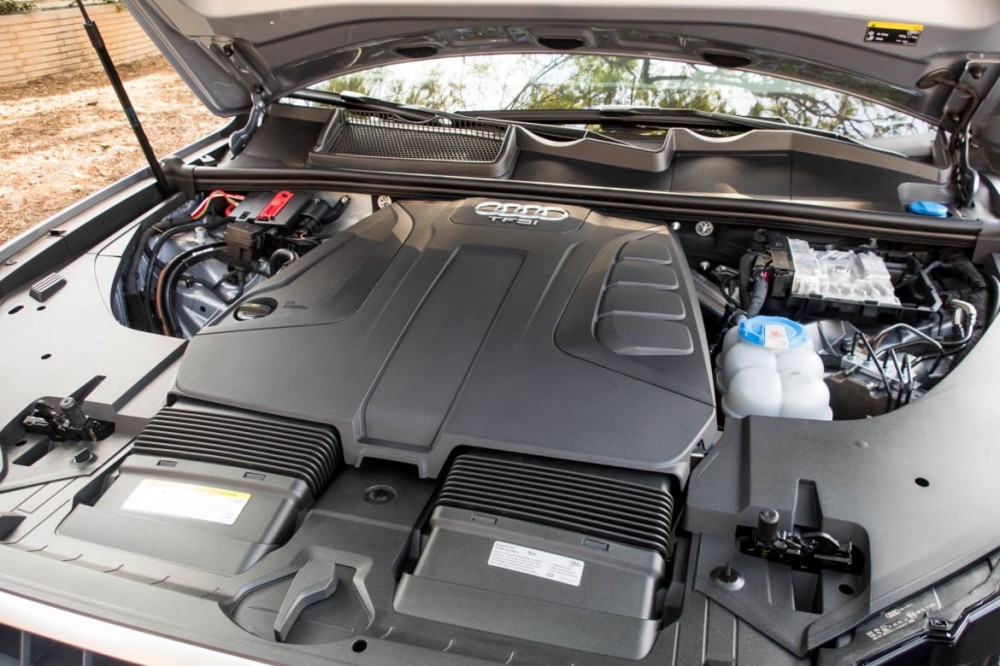
On paper, that gives the 3.0T a big advantage. It's got a zero-to-60-mph time of 5.7 seconds, which is 1.4 seconds faster than the 2.0T, and it can tow as much as 7,700 pounds, much more than the 2.0T's 4,400-pound maximum. However, Audi says the 2.0T is significantly quicker that the 2015 model, even with the larger engine, due to nearly 500 pounds of weight loss in the redesign from greater use of lightweight aluminum.
Value Proposition
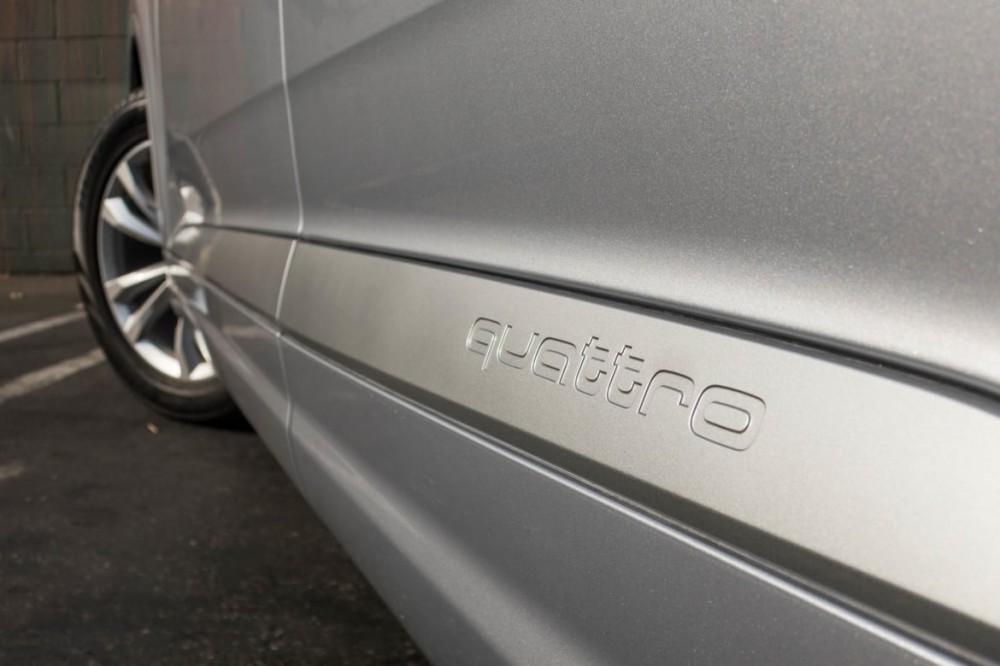
Compared to the 3.0T models, the 2.0T also offers one large selling point: value. Starting at $49,950 (including a $950 destination charge), that undercuts the starting price for 3.0T models ($55,750) by nearly $6,000. In terms of fuel economy, however, the 2.0T only offers only a minimal advantage over the 3.0T, with its 20/25/22 mpg city/highway/combined rating narrowly beating the 3.0T's 19/25/21 mpg estimate.
This isn't the first big three-row SUV to go with a small four-cylinder as an engine option; our Best of 2016 winner, the Volvo XC90, made the same choice with a turbocharged four-cylinder as its base engine. But in that case, I found that the engine didn't really match the car well, feeling taxed during acceleration and passing maneuvers. Even with the weight loss in the redesign, the Q7 isn't svelte; 2.0T models have a curb weight of 4,707 pounds. As I got behind the wheel, I could feel my skepticism start to kick in.
Road-Trip Tested
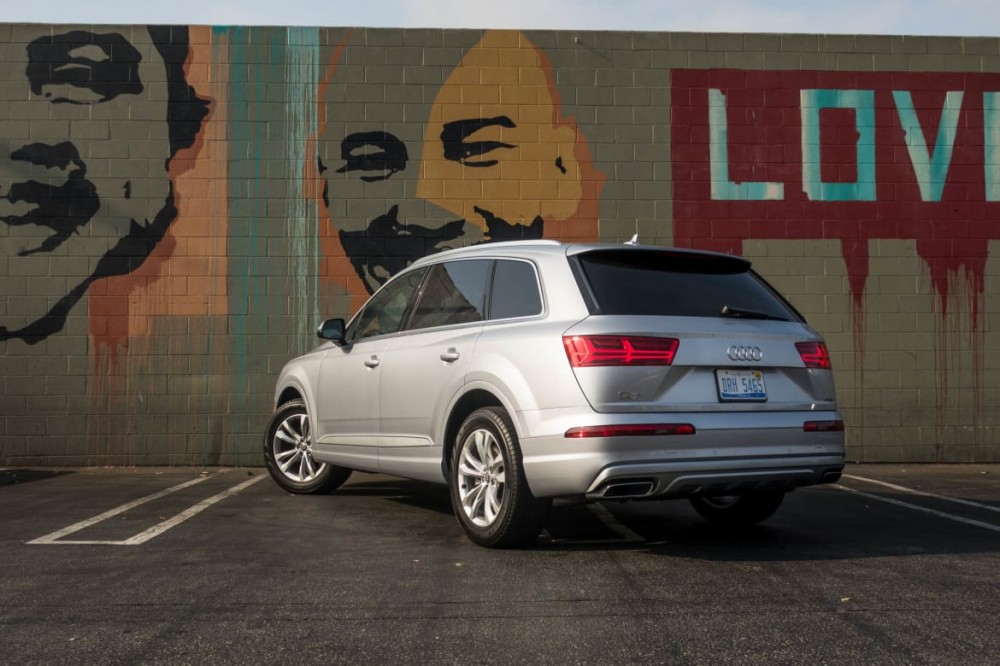
There is no better way to test this than a road trip, so I loaded up the Q7 with three other passengers and luggage for a jaunt from Los Angeles to San Diego for a friend's wedding.
From the get-go, the Q7 2.0T surprised me with how peppy it felt and the quickness it displayed. It pulls well from a stop, in both dynamic and normal modes, getting the Q7 up to speed quickly, uphill, downhill and on no hills.
I'd had two other fears about this engine. The first was that the engine would run out of breath for passing maneuvers. But jumping up to passing speed was a painless process: The eight-speed transmission proved adept at choosing and holding gears to get there, as well.
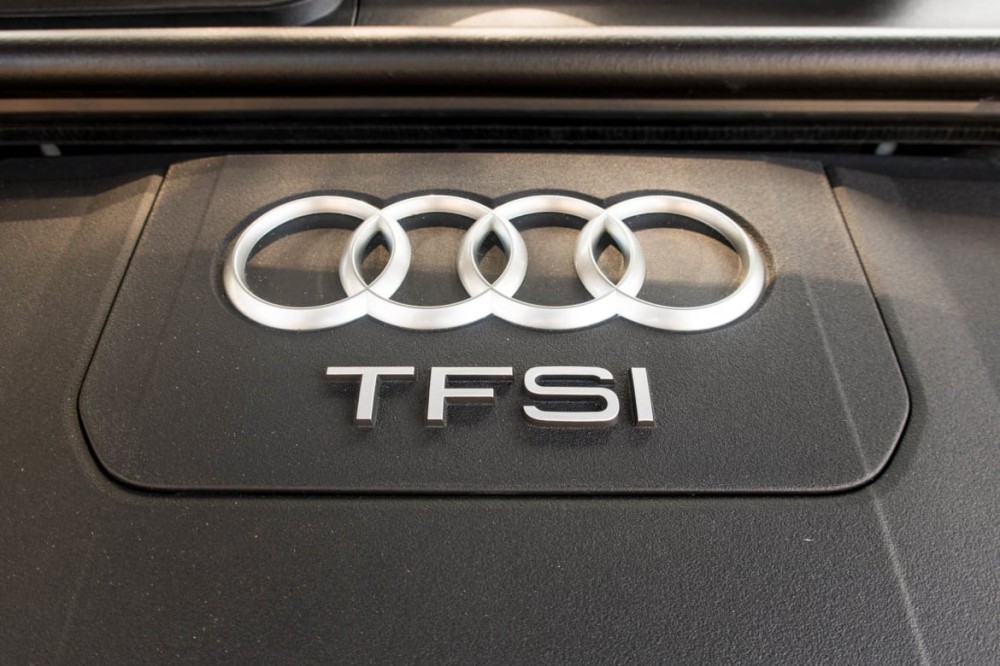
My second fear was that the engine wouldn't make for smooth driving — that leaning into it would cause the turbocharger to kick and it'd be hard to apply power linearly, bucking passengers back and forth. But acceleration was smooth and the Q7 was easy to pilot comfortably. According to Audi, all 273 pounds-feet of torque are available starting at 1,600 rpm, and that helps the four-cylinder feel like a larger-displacement engine.
And that's really the crux of it. The benefits of smaller-displacement engines (better fuel economy, lower cost) are desirable, but there's a trade-off to be had since they can at times feel overmatched by the car they're in. But the 2017 Q7 2.0T didn't feel like a compromise, it just felt like a luxury SUV — an agile one at that — that happened to have a four-cylinder engine. It felt just right.


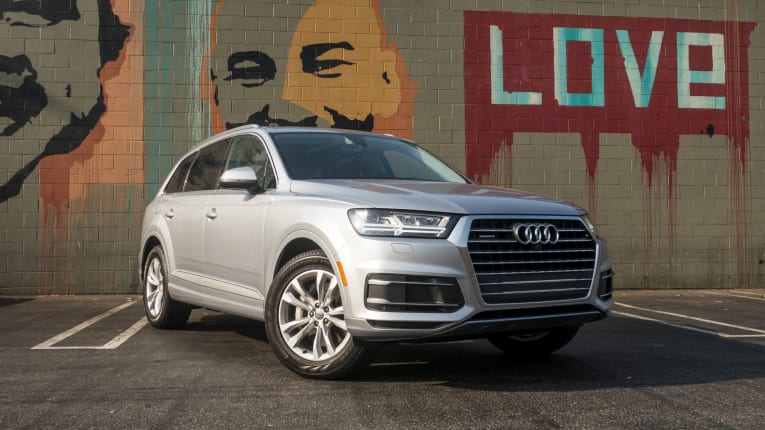
Leave a Reply